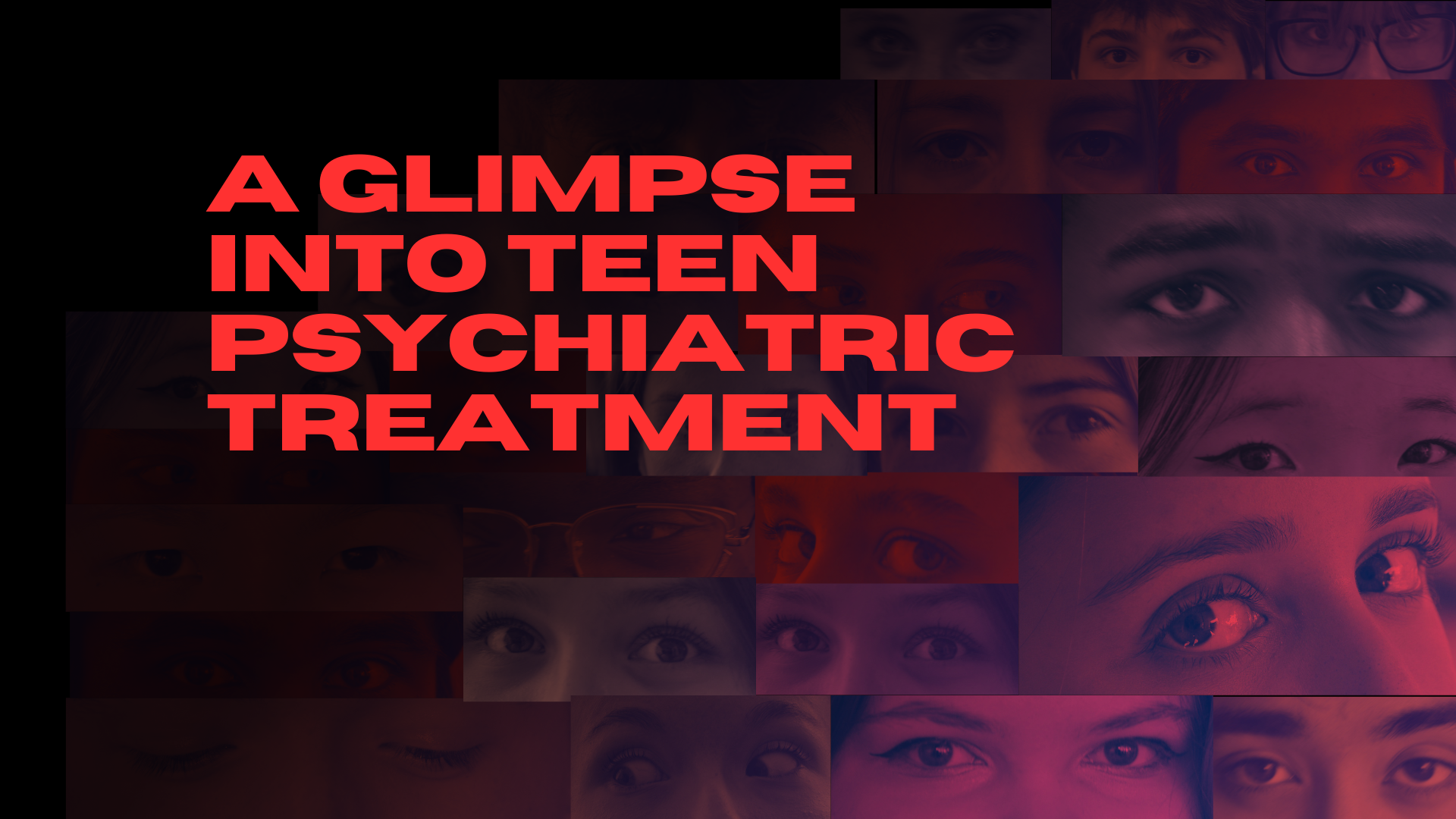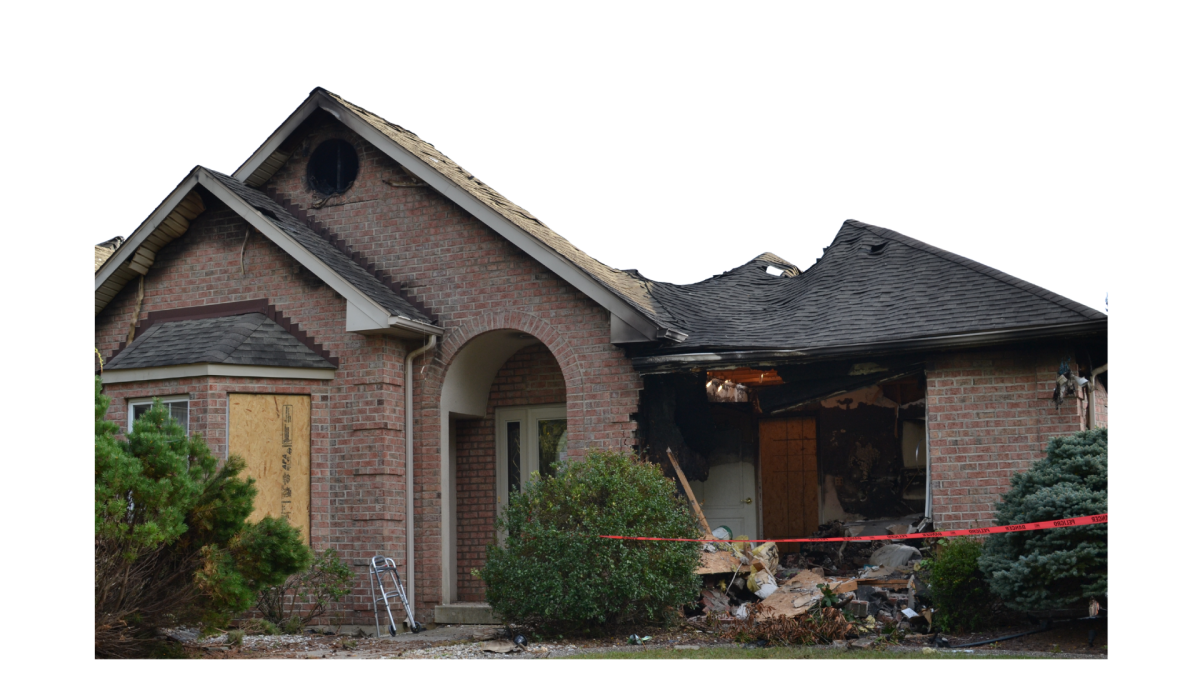This was previously published in our May 2025 issue.
“Oftentimes, I found it to be violent. Other times it was nice. It really depended on the day and the situation, but it was very chaotic.”
John, an Emmaus High School junior whose name was changed for anonymity, remained calm as he recounted his experience. His voice was smooth and composed as he explained his past. He suffered from a mental health crisis, leading him to seek care at KidsPeace, a youth psychiatric hospital within the Lehigh Valley.
“I had been going through a very dark period of depression and anxiety, panic attacks, the whole thing. I eventually tried to commit suicide several times,” John said. “It got so bad that friends were starting to report me [to staff at his middle school], and I voluntarily admitted myself.”
For many teens struggling with mental health challenges, finding the right support can be integral for managing their health. The United Way of the Greater Lehigh Valley, a nonprofit organization dedicated to addressing critical community issues, reports that four in ten youths in the Lehigh Valley experience feelings of sadness or depression on most days. 17 percent reported having suicidal thoughts. Addressing these issues through treatment can be vital, but not every facility is adequately equipped to provide help.
The Greater Lehigh Valley is home to numerous adolescent-oriented treatment programs and facilities. Some of the most prevalent include St. Luke’s, Embark Behavioral Health, Horsham Clinic, multiple LVHN-affiliated Adolescent Behavioral Health Services, and KidsPeace.
John underwent inpatient treatment and acknowledges that his period at KidsPeace was a tough time to get through.
“It was intense,” John said. “I was there for about two weeks. It wasn’t a great time in my life, so [my] emotions were always heightened.”
Adolescent mental health treatment programs, including inpatient, are designed to provide comprehensive care and supervision, offering ongoing and continuous in-depth treatment. Patients are admitted to facilities through referrals, provided by psychiatrists, primary care physicians, and social workers.
William Halko, a psychologist at Eyer Middle School, serves as a counselor to students facing mental health or behavioral crises. When he deems it necessary, Halko can refer students to various treatment facilities.
“I also look into the things they’re saying, and then I try to determine, does this person need to go to the hospital, or are they okay to stay in school?” Halko said. “I’ve heard some kids say they went and made friends and things felt a lot better. Sometimes they’ll come back and they’ll tell me, ‘yeah, I feel a little more traumatized,’ or ‘I saw kids who had issues that were worse than my own there, and that was kind of disturbing for me.’”
Ultimately, the goal of treatment facilities is straightforward: to help patients recover and navigate challenging times in their lives. KidsPeace Director of Communications Robert Martin believes that KidsPeace does well in its efforts to achieve this.
“We really aim at trying to give the kids the tools that are necessary for them to succeed and thrive in their adult lives, and they work hard. These are not simple conditions,” Martin said. “We’re very proud of our associates for what they do. We’re also proud of the kids because they’re making tremendous efforts to try to deal with the situation they’re finding themselves in.”
Though seeking care has become more normalized, some people may still be hesitant to do so due to stigmas that revolve around mental health. Danielle Walsh, a psychology teacher at EHS, and former case manager for Cornell Abraxas (an agency that deals with adjudicated youth) helped to place struggling adolescents in appropriate treatment fit for them. Walsh explained that in certain situations, residential and inpatient care is necessary.
“Certainly if the kid is committing crimes, if the kid is self-harming, if the kid is addicted, they need to be removed from that environment that they’re in where it’s allowing those cycles to continue,” Walsh said. “So you have to find a way to break that cycle, so in that way, the facilities really are a good starting point, because there’s a lot more that needs to happen.”
It is critical for teens struggling with mental health episodes to receive proper care and treatment; however, the industry itself lacks some of the necessary resources to provide that support to those in need. Industry-wide struggles — like a lack of staff — pile up, and create a host of new, severe issues.
Kevin Rhodes, an EHS Jasper and social studies teacher, previously worked at KidsPeace. He identified a lack of staffing at KidsPeace; however, he acknowledged that it is not a problem exclusive to the Lehigh Valley.
“It’s just a nationwide issue of the lack of manpower,” Rhodes said. “It’s people not going into the field, and there not being enough professionals for the amount of people that need support.”
Others in the field echoed Rhodes’ sentiment about a lack of healthcare professionals in the field, emphasizing a shortage on both a local and national level.
“One of the biggest problems that we faced in terms of things like funding, in terms of things like attracting people to come into the field, was the stigma around mental health care,” Martin said. “One of the unexpected effects of COVID-19 was that it wiped away the stigma of mental healthcare…but on the other hand, it created much more demand for the service.”
This shortage not only affects the number of patients that facilities can serve, but also impacts the quality of care provided. Shaquita Holman, a previous nursing student who
completed a two-week clinical study at KidsPeace, felt the strain firsthand.
“If they did have more of a steady staff, they would be way better than what they are,” Holman said, explaining how physically and mentally draining working at a psychiatric hospital can be.
“It does work hard on your body and your mental [health]. You have kids there for different reasons, and it’s hard, so sometimes it wears on you, and you take it home with you,” Holman said. “So you’ve just got to ask yourself… how long do you want to do this?”
Holman completed a study in which she attended KidsPeace every other day for two weeks as part of a nursing program. Holman worked in various areas across the building, including reviewing the case files of admitted patients and working directly with patients receiving their care.
She noted an experience a co-worker shared with her, which highlighted the dilemma many employees may face.
“I met a lady who was saying that she doesn’t know how long she could take it anymore,” Holman said. “[She said] she might need to take a break and then come back, because she loves kids, but she doesn’t know [how much longer she could handle the pressure]. So it all depends on the person.”
With limited personnel, mental health treatment facilities are often forced to stretch their teams thin. These challenges become more severe when working with youth who have more complex or intense needs.
“It takes a certain, special type of person to be able to work with those more severe cases,” Rhodes said.
John believes that many of the issues he encountered during his stay at KidsPeace stem from systemic problems, rather than the concept of treatment itself.
“Generally, these places have the best intentions, and the people working there are doing their best,” John said. “I received very little on the psychiatric end — psychology, therapy, psychiatric medication, that kind of stuff. I understand that they’re probably understaffed, underfunded, but [it wasn’t enough].”
Beyond a lack of personnel within the mental health care system, multiple other issues persist within these facilities.
In a 2018 in-patient safety study documented in the National Library of Medicine, researchers Morgan Shields, Maureen Stewart, and Kathleen Delaney reported that in the 14 psychiatric units included in their study, they identified an adverse event (which referred to events including self-harm or injury, adverse drug event, assault, sexual contact, patient fall, and “other”) in 14.5 percent of hospitalizations, and a medical error (any mention in the chart of medication errors, leaving the hospital without medical consent, possession of contraband, and other non-medication errors) in nine percent of hospitalizations.
The study noted that factors such as a lack of accountability towards staff who commit errors, as well as the prioritization of cost-effectiveness over patient well-being, may significantly contribute to these errors. It also highlighted the importance of trauma-informed care.
Aside from under qualified staff, a lack of resources and staff within inpatient care facilities can negatively contribute to the possible lack of necessary treatment for those struggling with mental health. According to The Commonwealth Fund, a private American foundation that advocates for a high-performing healthcare system, approximately 160 million Americans reside in areas with a shortage of mental health professionals as of March 2023.
These shortages can create an unpredictable environment, even for those working there.
Rhodes acknowledged that each day was different, and that workers handled circumstances to the best of their ability.
“There’s good days and bad days,” Rhodes said. “I worked in a more severe unit, so there’s definitely days where the kids were a little bit more violent than what you would expect from a normal hospital setting. But for the most part, [it] was pretty supportive. We did deal with a lot of severe issues.”
In addition to staff issues, conflicts can also stem from mixing too many patients with a variety of different issues.
“I almost got into a fight my first week,” John said. “There were people obviously there for not just the stuff that I was there for, but also homicidal thoughts, violent behaviors, that sort of thing.
Rhodes worked within the “anger stemming from sexual abuse” unit, which services patients who are both victims and perpetrators. He often saw altercations during his time in the unit.
“We had one [staff member] that got punched in the face because he tried to take a kid’s safety point [a reward system used at KidsPeace],” Rhodes said. “In the unit I was in, it happened about once a week; there was some sort of major altercation like that, whether it was between the patients or between patients and staff.”
Unfortunately, sometimes patients became victims of violence and abuse at the hands of the staff. A report by the International Association for Healthcare Security and Safety Foundation detailed risk factors for patient abuse in institutional settings, including uncritical hiring, insufficient training for unskilled staff, understaffing, poor managerial supervision, and the toleration of “intolerable behavior” from staff members.
In some cases, sexual assault and similar situations can occur due to unequipped and understaffed facilities, some even in the Lehigh Valley. A Pennsylvania State Police (PSP) Public Information report (Case PA 2024-1388299) stated that PSP Bethlehem is currently investigating an incident where a 13-year-old KidsPeace client disclosed to a member of staff that she was sexually assaulted by another client “on or around Sept. 22, 2024.”
Additionally, according to local news website North Penn Now, former employee of Horsham Clinic, a local mental health facility in Ambler, Pennsylvania, had such an incident. Tayib Innis was sentenced to jail time after admitting to soliciting nude images from an underage girl whom he met while working at Horsham.
According to The Morning Call, former KidsPeace employee Kharee Greene was charged with institutional sexual assault of a juvenile resident in 2021. He eventually pleaded guilty to one count of institutional sexual assault.
Even more recently, Horsham Township Police Department reports that a former Horsham Clinic staff member, Ahmed Allie, pleaded guilty on Feb. 7 to Involuntary Deviant Sexual Intercourse of a Minor and Institutional Sexual Assault of a Minor.
The issue extends outside of the Lehigh Valley as well. A 2024 Congressional Report entitled “Warehouses of Neglect: How taxpayers are funding systemic abuse in youth residential treatment facilities,” states that sexual abuse is pervasive enough at treatment facilities as to undercut their ability to treat children effectively.
Such systematic challenges can create issues in treatment facilities that can sometimes seem insurmountable.
However, in spite of the presence of severe issues at certain facilities, inpatient treatment can also be an essential tool for struggling adolescents to use if they need a strong presence of guidance to recover.
Junior Morgan Schuler went through a mental health crisis of her own when she was in middle school and then high school.
She spent time at both LVHN Adolescent Behavioral Health Services in Muhlenberg during middle school and at the Horsham Clinic during her freshman year of high school. Both are similar in that they offer some of the same treatments; however, LVHN Muhlenberg is a public practice affiliated with a large hospital, while Horsham Clinic is a private practice.
Schuler compared the two inpatient programs and ultimately concluded that LVHN Muhlenberg was more effective.
When Schuler was admitted a second time, she had hoped to return to Muhlenberg. However, when beds at Muhlenberg were full, she attended Horsham Clinic. Ultimately, her standards were not met.
“My expectations were for it to be therapeutic and for it to help me, obviously, because that’s the whole point. But in this case, it did the opposite,” Schuler said. “I had to actually leave early. I was only there for three days because I wasn’t able to emotionally handle the poor staff, the aggression of other kids. They weren’t treating me the way that I needed.”
Despite facing difficulties at Horsham Clinic, Schuler emphasized the importance of getting care. She felt that the outpatient treatment helped her get to a better place.
“Everyone is struggling. No matter what, everyone is going to struggle at some point in their life, one way or another. And you just need to know your resources,” Schuler said.
Ultimately, John believes that with more resources, the facilities would be better equipped to provide adequate care.
“I do believe that if they were provided with the resources they need, they would be a force for greatness,” John said. “But in this current state, I don’t believe that these places can give [the] care that people need.”






